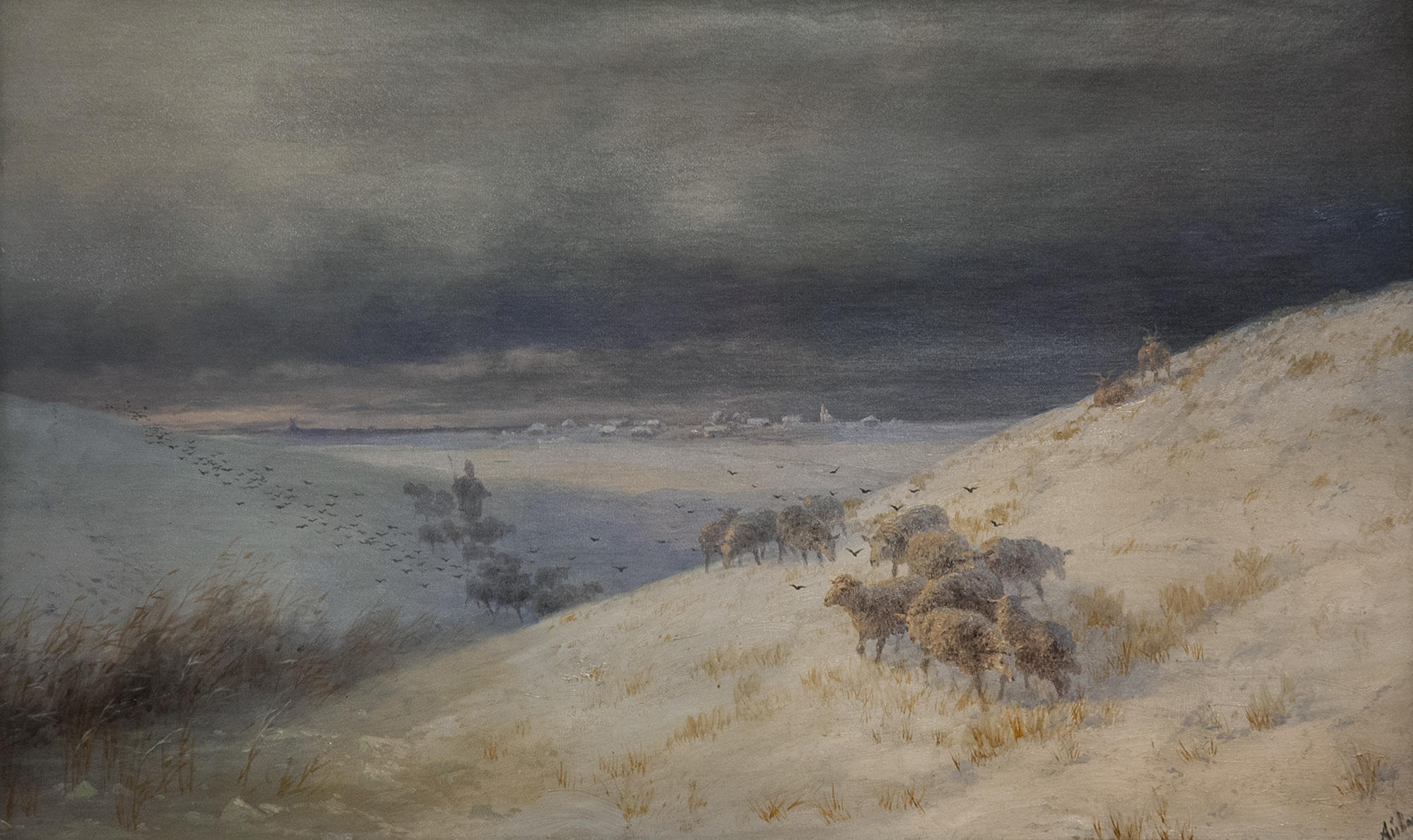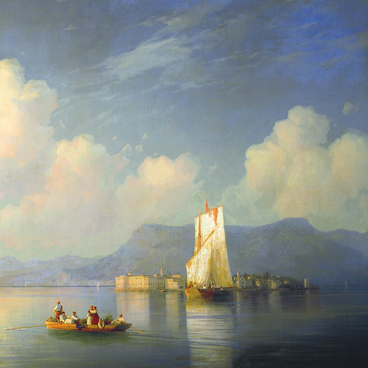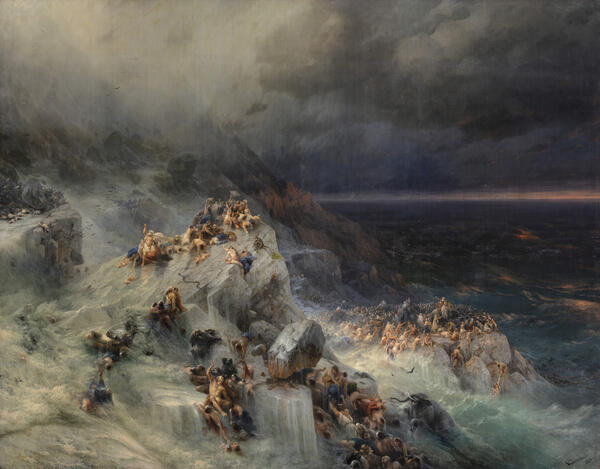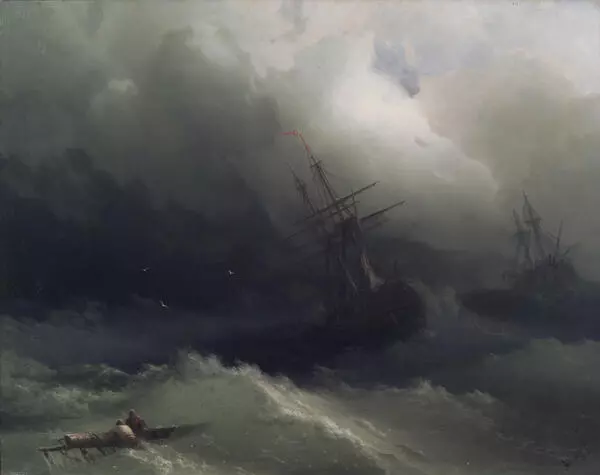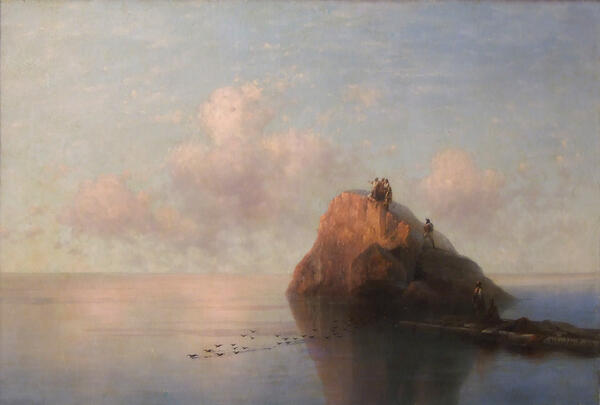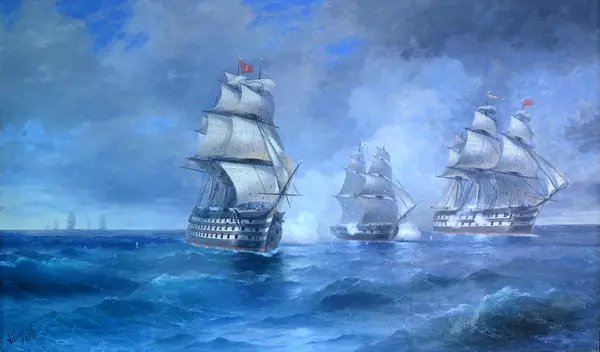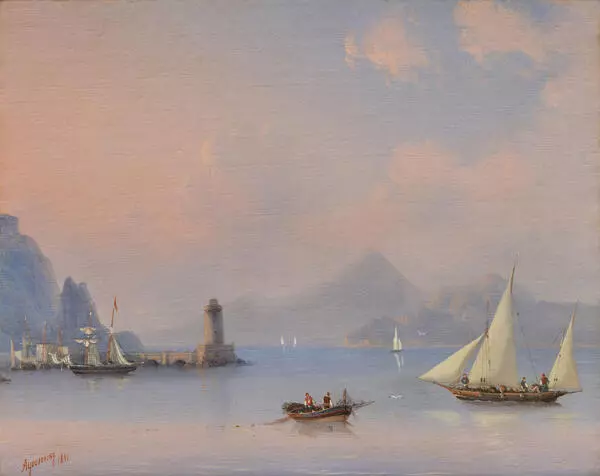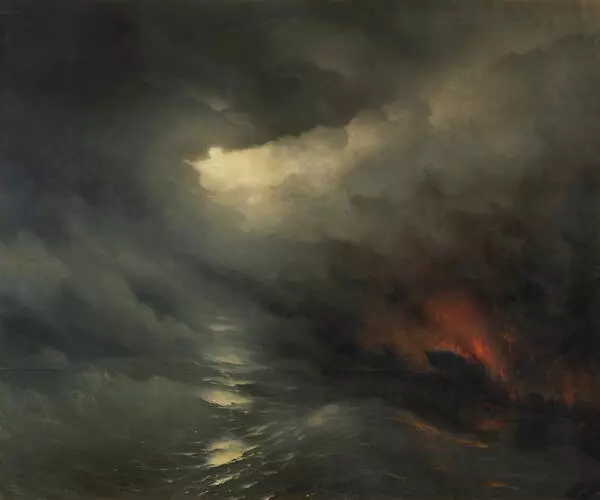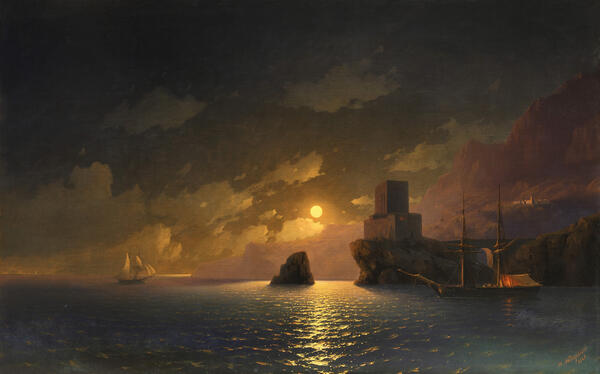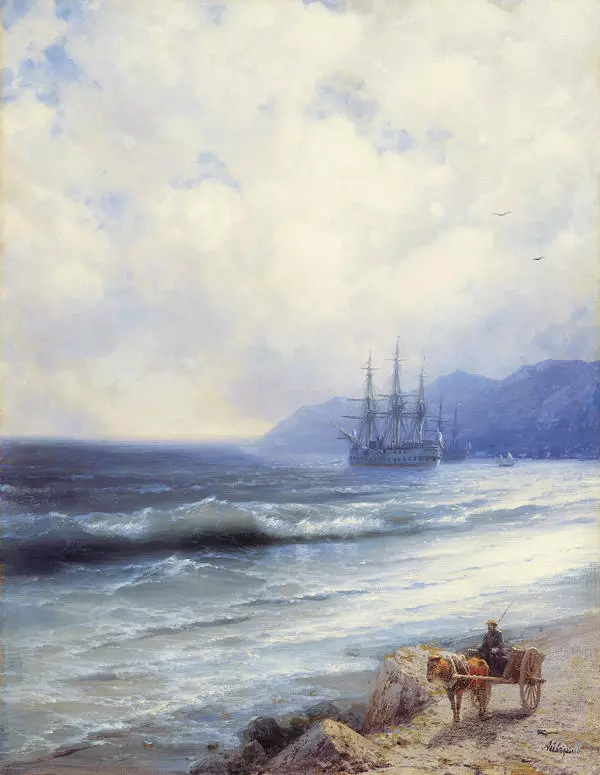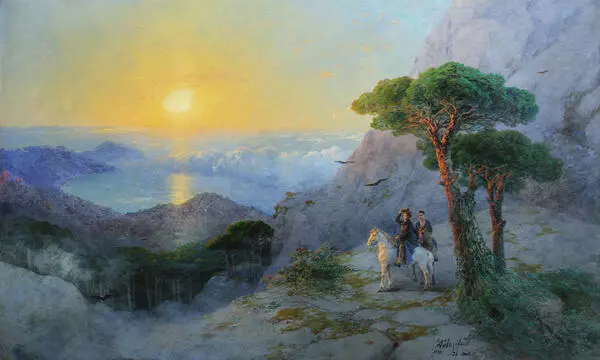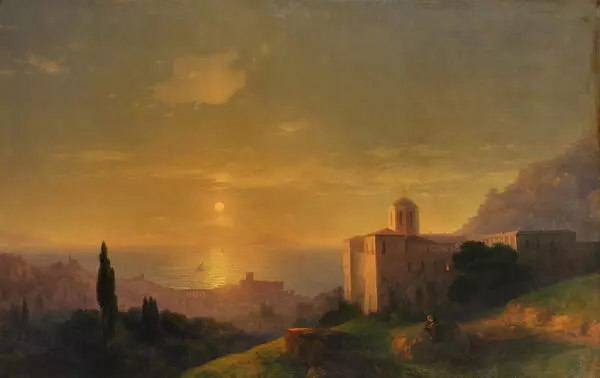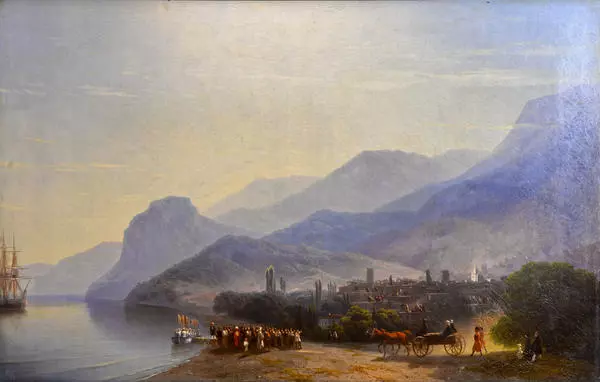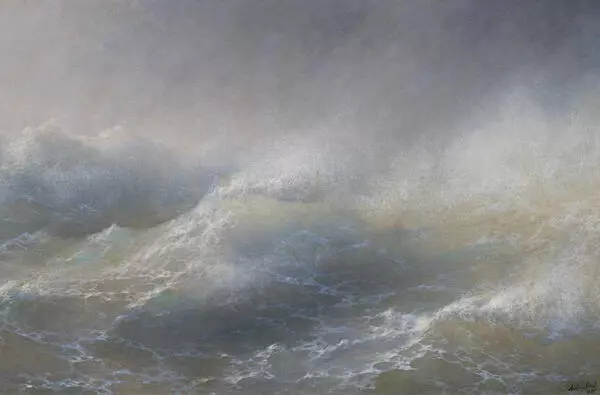During the 1890’s, Ivan Aivazovsky was among the leading masters of Russian painting. He was actively involved in public life in his native Feodosia and created prominent works regarded as some of the best in his oeuvre. In Russia, Aivazovsky exhibitions were held practically every year, and in 1890, the artist displayed his work in Paris. Perhaps the most precise description of Aivazovsky’s character and mindset in 1890’s belongs to critic Yury Galabutsky: “My conversations with Ivan Konstantinovich convinced me that he possessed a kind heart and a lively, sharp mind. But his enormous life experience must have taught him to live with many things that contradicted his beliefs and for which deep inside he lacked sympathy”.
Aivazovsky often turned his hand to painting winter. Most of his winter landscapes depict St.-Petersburg, where the artist spent several years studying at the Academy of Arts. A story has it that the first question Russian poet Alexander Pushkin asked Aivazovsky at one of the Academy of Arts’ exhibitions in 1836 was whether St.-Petersburg was too cold for a southerner. Yet, his artistic legacy comprises some paintings of the winter Crimea with its damp air and wet snow. One example is Winter, painted in 1895, in the last years of the master’s life.
In his winter urban landscapes, the painter preferred to depict genre scenes: riding a three-horse carriage and other episodes from daily life. Thus, Winter shows a herdsman leading sheep and probably looking for a better pasture. The artist painted a snow-covered plain and a trail stretching off to the horizon. Though simple in its subject, the painting is immaculately executed. The colours range from subdued blue ochre to bluish black. The painter realistically depicted the subtle colours of a winter landscape. The wide low sky with dark clouds imparts the painting a somewhat unsettling mood. Such were the Crimean winters requiring of the painter more somber colours and scenes.
Aivazovsky often turned his hand to painting winter. Most of his winter landscapes depict St.-Petersburg, where the artist spent several years studying at the Academy of Arts. A story has it that the first question Russian poet Alexander Pushkin asked Aivazovsky at one of the Academy of Arts’ exhibitions in 1836 was whether St.-Petersburg was too cold for a southerner. Yet, his artistic legacy comprises some paintings of the winter Crimea with its damp air and wet snow. One example is Winter, painted in 1895, in the last years of the master’s life.
In his winter urban landscapes, the painter preferred to depict genre scenes: riding a three-horse carriage and other episodes from daily life. Thus, Winter shows a herdsman leading sheep and probably looking for a better pasture. The artist painted a snow-covered plain and a trail stretching off to the horizon. Though simple in its subject, the painting is immaculately executed. The colours range from subdued blue ochre to bluish black. The painter realistically depicted the subtle colours of a winter landscape. The wide low sky with dark clouds imparts the painting a somewhat unsettling mood. Such were the Crimean winters requiring of the painter more somber colours and scenes.
